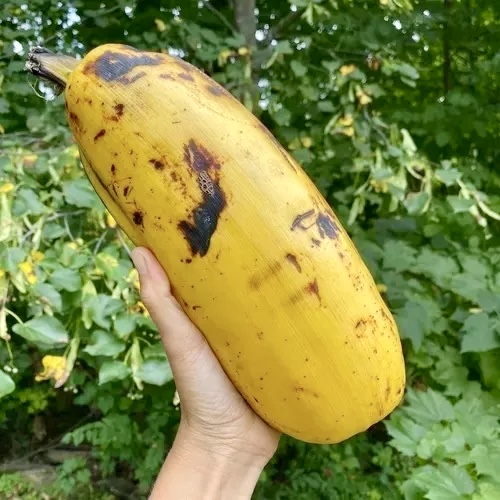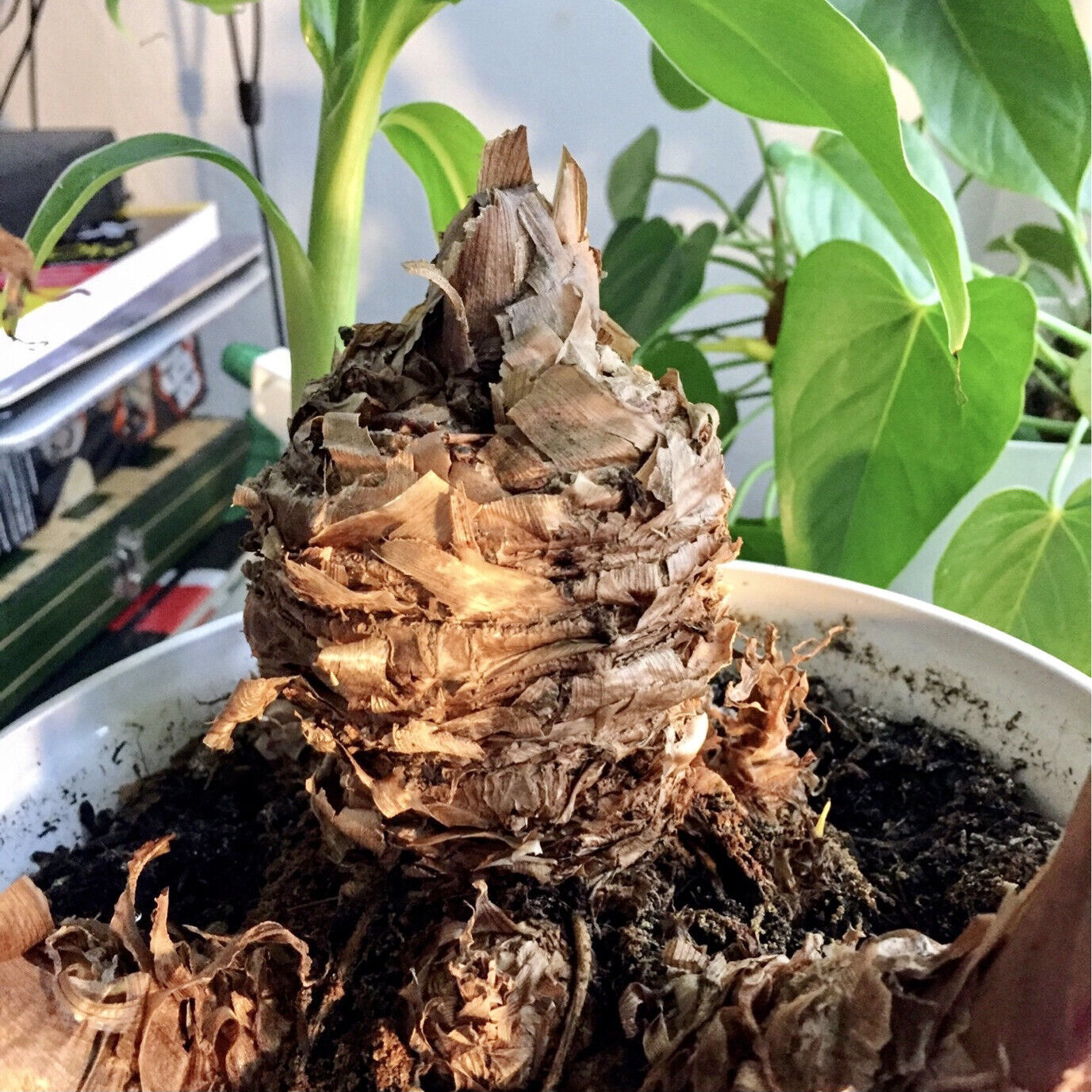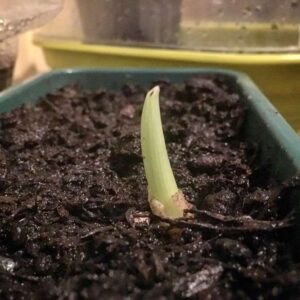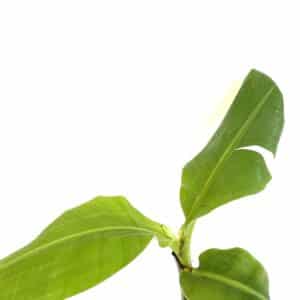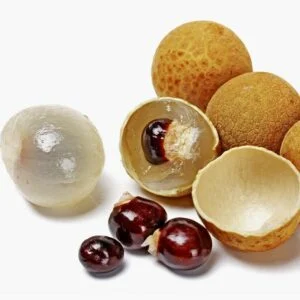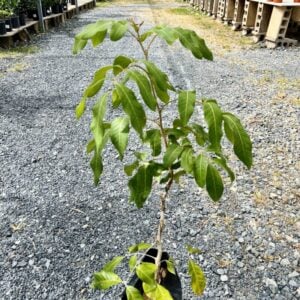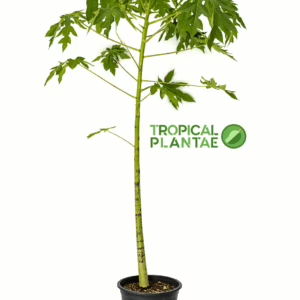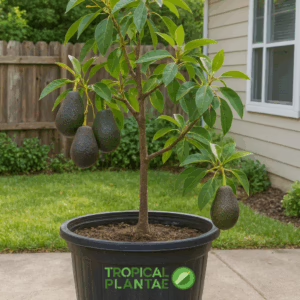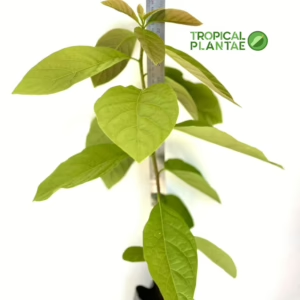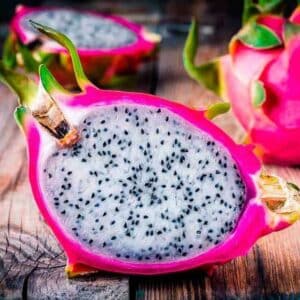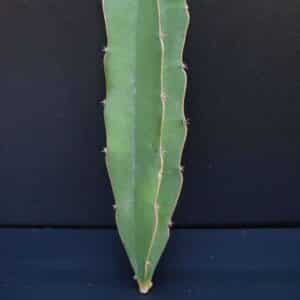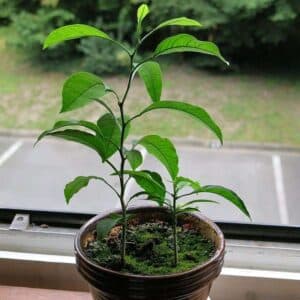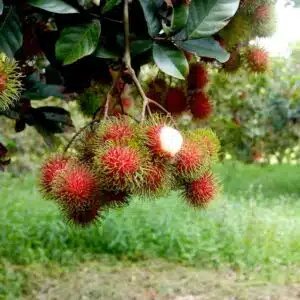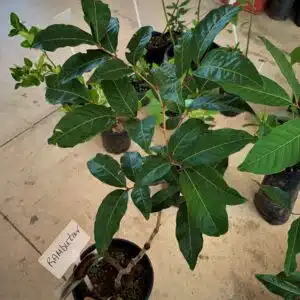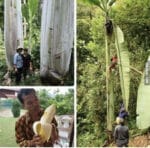
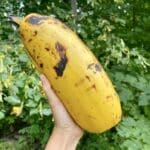
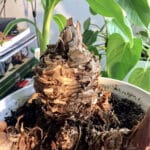
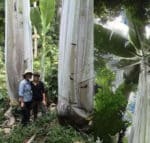
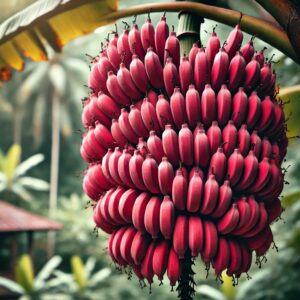
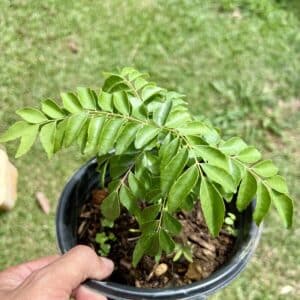
Largest giant banana live fruit plant ( musa ingens) seedlings
$100.00 Original price was: $100.00.$39.99Current price is: $39.99.
Giant banana, Musa ingens, known as the Giant Highland Banana, stands as one of the most remarkable species within the Musa genus, which includes bananas and plantains. This species is native to the tropical rainforests of New Guinea and is renowned for its extraordinary size, making it one of the largest banana species in the world.
Largest banana Musa ingens, colloquially known as the Giant Highland Banana, is a botanical marvel that pushes the boundaries of the Musa genus, to which both bananas and plantains belong. This species, indigenous to the lush, tropical rainforests of Papua New Guinea, stands as a testament to nature’s capacity for grandeur and diversity. With its towering presence and majestic foliage, Musa ingens is not just a plant; it’s a living monument of the natural world, encapsulating the essence of tropical biodiversity.
At the heart of Musa ingens’ awe-inspiring nature is its size. The plant can soar to heights of up to 15 meters (approximately 49 feet), making it the tallest banana species on the planet. Its pseudostem, which is a false stem made of tightly packed leaf bases, exhibits a robust girth capable of supporting the plant’s colossal height. This structural marvel is a sight to behold, towering over the forest floor with the grace and majesty of a natural skyscraper.
The leaves of Musa ingens further contribute to its grandiosity, each reaching several meters in length. These expansive, bright green leaves fan out from the top of the pseudostem, capturing the sun’s rays and painting a picture of vitality and exuberance. The sheer size of each leaf is a wonder, showcasing the plant’s evolutionary adaptation to its environment. When the wind sweeps through the forest, these leaves create a symphony of rustling sounds that underscore the tranquility and untouched beauty of their highland rainforest home.
Flowering and fruiting are events of considerable note for Musa ingens. The plant produces large inflorescences that hang from the top of the stem, each capable of developing into bunches of fruit. However, unlike the cultivated bananas that grace our tables, the fruits of Musa ingens are filled with large, hard seeds, offering little in the way of edible flesh. This characteristic underscores the plant’s role in the ecosystem, providing sustenance for wildlife rather than human consumption.
Musa ingens thrives in the cool, moist conditions of Papua New Guinea’s highland forests, an environment that presents a stark contrast to the lowland tropics typically associated with banana cultivation. This unique habitat, characterized by its high altitude and cooler temperatures, is critical to the growth and survival of the species. Here, in the mist-shrouded forests, Musa ingens finds refuge, its roots delving deep into the fertile, volcanic soil.
The conservation status of Musa ingens is a matter of concern. As with many of Papua New Guinea’s endemic species, it faces threats from deforestation, habitat loss, and the encroachment of agricultural development. The preservation of Musa ingens is not only vital for maintaining biodiversity but also for protecting the intricate web of life that depends on the highland rainforest ecosystem. Conservation efforts aimed at safeguarding these habitats are crucial for the survival of this and countless other species.
Musa ingens is more than just a plant; it is a symbol of the wild, untamed beauty of Papua New Guinea’s highland forests. It represents the delicate balance of life in these ecosystems and serves as a reminder of the importance of conservation. For botanists, ecologists, and nature enthusiasts, Musa ingens offers an unparalleled opportunity to explore and appreciate the complexity and splendor of the natural world. As efforts to conserve its habitat continue, Musa ingens stands tall, a beacon of hope and a testament to nature’s resilience and diversity.
| Weight | 10 oz |
|---|---|
| Dimensions | 22 × 4 × 4 in |
| Planting Bag + Soil |
Planting bag + Soil ,I have soil and container |


